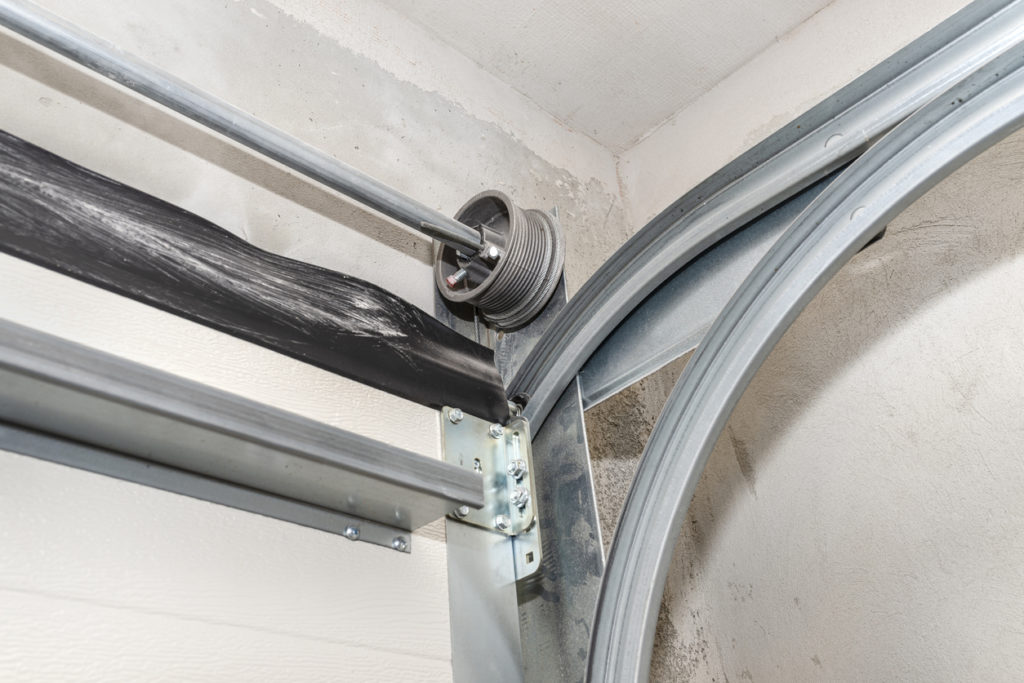Can you install a new garage door on old tracks?
If you’re thinking about upgrading your garage door, you may be wondering … can you install a new garage door on old tracks?
Upgrading your garage door is an excellent way to enhance your home’s curb appeal and security, but many homeowners may be tempted to save money by reusing their old tracks.
In this article, we’ll discuss the disadvantages of not replacing tracks, the advantages of opting for new tracks, and the differences between old tracks and modern ones. By the end, you’ll understand why it’s essential to invest in new tracks when installing a new garage door.
So, let’s start with the main question …
Can you install a new garage door on old tracks?
While it is possible to install a new garage door on old tracks, it is not recommended. Tracks may wear out or become misaligned over time, causing potential safety hazards. For optimal performance and safety, replace both the garage door and tracks to ensure they are compatible and functioning properly.
The Disadvantages of Not Replacing Tracks
When it comes to garage door upgrades, it’s crucial to consider the entire system, not just the door itself.
One component that is often overlooked is the garage door track. Many homeowners may be tempted to reuse their old tracks to save on costs, but this decision can have significant consequences. In this section, we’ll delve into the disadvantages of not replacing tracks when installing a new garage door, covering safety concerns, compatibility issues, reduced lifespan, and the risk of voiding your warranty.
Understanding these drawbacks will help you make an informed decision for your garage door upgrade.
Safety Concerns: Old garage door tracks can pose significant safety risks. Over time, tracks can develop rust, corrosion, or damage, which can lead to a malfunctioning or collapsing garage door. Installing a new garage door on old tracks could result in accidents or injuries, especially if the tracks aren’t in optimal condition.
Compatibility Issues: Garage doors and their tracks are designed as a system, and different manufacturers have varying specifications. Reusing old tracks might not be compatible with your new garage door, leading to improper operation and potential damage to both the door and the tracks.
Reduced Lifespan: A study by the International Door Association states that a garage door’s average lifespan is approximately 15-30 years, depending on its quality and maintenance. Installing a new door on old tracks can shorten this lifespan, as the worn-out tracks may cause excessive wear and tear on your new garage door.
Voided Warranty: Most garage door manufacturers require the use of their tracks and other components to maintain the door’s warranty. By reusing old tracks, you risk voiding the warranty on your new garage door, which could cost you in the long run.
The Advantages of Replacing Tracks
Now that we’ve covered the drawbacks of reusing old tracks, let’s turn our attention to the numerous benefits of investing in new tracks when installing a new garage door. By opting for new tracks, you’ll enjoy improved safety, seamless operation, enhanced performance, and the assurance of maintaining your warranty. In this section, we’ll delve deeper into each of these advantages, demonstrating why replacing your tracks is a wise decision that contributes to the longevity and effectiveness of your entire garage door system.
Improved Safety: New tracks are designed to meet current safety standards and are less likely to cause accidents or injuries due to their improved quality and construction.
Seamless Operation: By using tracks specifically designed for your new garage door, you can ensure a smooth and efficient operation. This can also reduce the stress on the door opener, prolonging its lifespan.
Enhanced Performance: Modern tracks are engineered to provide better support and stability for your garage door. Replacing old tracks with new ones will result in a quieter, smoother, and more reliable performance.
Maintained Warranty: By installing new tracks alongside your new garage door, you can maintain the manufacturer’s warranty, ensuring coverage for any future issues or defects.
The Differences Between Old Tracks and New Modern Tracks
As garage door technology has evolved over the years, so have the tracks that support them. In this section, we’ll explore the key differences between old tracks and new modern tracks, illustrating how these changes impact the safety, performance, and compatibility of your garage door system. Understanding these distinctions will help you make an informed decision when choosing tracks for your new garage door, ensuring a seamless and efficient operation.
Material and Construction: Modern garage door tracks are typically made of galvanized steel, which resists rust and corrosion better than older tracks. Additionally, new tracks often have a more robust construction, offering enhanced durability and longevity.
Design Features: New garage door tracks come with design features that improve performance and safety. For instance, modern tracks may have rolled edges to minimize the risk of finger injuries, or they may be adjustable to ensure a perfect fit for your garage door.
Compatibility with Modern Garage Doors: Today’s garage doors are often more substantial and better insulated than older models. New tracks are designed to accommodate these enhancements, ensuring proper support and operation.
Frequently Asked Questions
With years of hands-on experience installing and maintaining garage doors, we know a thing or two about garage door installation and often hear the same questions relating to garage door tracks.
Take a look at the section below to discover the most common questions we receive from customers regarding garage door tracks and rails.
Are garage door tracks universal?
Garage door tracks are not universally compatible, as they come in various sizes and configurations to accommodate different door types and sizes. It’s crucial to select tracks that match your specific garage door system to ensure proper operation and safety. Always consult the door manufacturer’s guidelines for accurate track compatibility and installation requirements.
Can I replace a garage door without changing the rails?
Yes, you can replace a garage door without changing the rails, as long as the new door is compatible with the existing rail system. Ensure the rails are in good condition and properly aligned before installation. However, if the rails show signs of wear or damage, it’s recommended to replace them for optimal performance and safety.
Can you reuse the track for garage door?
Yes, you can reuse the track for a garage door, provided it is in good condition and compatible with your new door. Inspect the track for any damage, rust, or wear, and ensure it is clean and well-lubricated. If the track shows signs of wear or is incompatible, it is recommended to replace it for optimal performance and safety.
Can I buy a garage door without the tracks?
Yes, you can purchase a garage door without the tracks. Many manufacturers offer the option to buy just the door panel, allowing you to customize or replace an existing door. However, ensure that your current tracks are compatible and in good condition before installation for smooth operation and safety.
How much does it cost to put garage door back on tracks?
The cost of putting a garage door back on its tracks can range from $100 to $200, depending on the complexity of the issue and local labor rates. This price typically includes inspection, realignment, and lubrication of the tracks. Additional costs may apply if parts need to be replaced or extensive repairs are necessary.
Are Chamberlain and LiftMaster rails the same?
Chamberlain and LiftMaster garage door opener rails are not identical but are highly compatible, as both brands are manufactured by the same parent company, The Chamberlain Group. Although there may be slight design differences, the rails generally share similar dimensions, components, and functionality, allowing for easy interchanging between the two brands.
Conclusion
In conclusion, while it may be tempting to save money by reusing old garage door tracks, the potential risks and disadvantages far outweigh the benefits. By investing in new tracks, you can enjoy a safer, smoother, and more reliable garage door system.
If you’re looking to replace your garage door and need a trusted, affordable provider for garage door sales and installation, look no further than Your Garage Door Guys. With years of experience and a commitment to customer satisfaction, Your Garage Door Guys can help you find the perfect garage door and track combination that fits your needs and budget. Don’t compromise on safety and performance; invest in new tracks for your new garage door and enjoy the peace of mind that comes with a secure and efficient system. Contact Your Garage Door Guys today to get started on your garage door upgrade!


